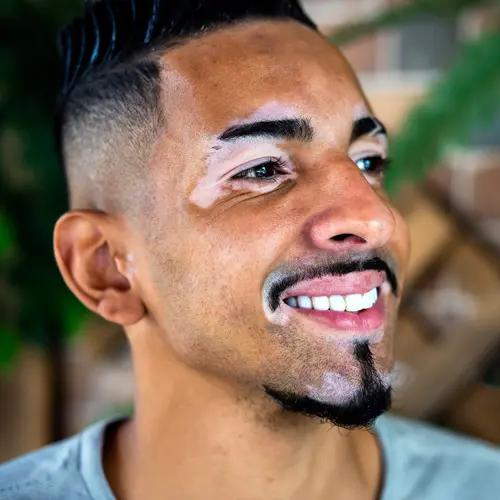Actinic Keratosis
Actinic keratoses (the plural of actinic keratosis) or solar keratosisdescribes patches or lesions on the outer layer of your skin that are caused by too much exposure to the ultraviolet rays of sunlight. They're also the beginnings of skin cancer and most often affect people over 40.
It's estimated that more than 40 million Americans get actinic keratosis each year. This condition is more common in high altitudes and sunny countries closer to the equator. It can also occur in young adults who spend a lot of time outside in the sun.
People with fair skin, blond or red hair, and blue or green eyes are most at risk of getting these rough, scaly patches, or keratoses. But they can happen to people of all skin types. A history of sunburn also increases your risk. If not treated, these patches can develop into a more serious form of skin cancer, although this is unusual.
To prevent actinic keratosis:
- Avoid exposure to sunlight during peak sunlight hours (10 a.m. to 2 p.m.).
- Wear protective clothing with a UPF rating of 30 or above that covers your arms and legs.
- Wear a hat with a brim that's at least 2 inches wide and protects your ears, or carry an umbrella when you're outdoors during peak sunlight hours.
- Use sunscreen with a sun protection factor (SPF) of 30 or higher, applying it at least 15 to 30 minutes before sun exposure.
- Choose a sunscreen that's labeled “broad-spectrum” or whose label says it provides both UVA and UVB protection.
- Reapply sunscreen every 2 hours when outdoors, even on cloudy days.
- Reapply sunscreen more frequently than that if you're sweating, and reapply it right after getting out of water. Use a sunscreen that's water-resistant for 80 minutes or longer.
- Remember that it's light from the sun that can be dangerous, so you can be at risk even when the temperature is mild.
Actinic Keratosis Symptoms
Actinic keratoses usually occur on areas of skin that receive lots of sun exposure – like the face, ears, the scalps of bald men, and the backs of the hands, legs, and arms. The lesions may be skin-colored, reddish, tan, pink, or silvery. They may look like a raised bump or be flat. Sometimes it's easier to feel them than see them. They tend to feel like sandpaper.
Actinic keratoses aren't tender. If you have a lesion that fits the description of actinic keratosis but is tender, it may have morphed into a type of skin cancer. If you have any skin lesion that's new, tender, bleeding, or that changes in appearance, see a dermatologist.
Actinic Keratosis Treatment
A number of treatments are available for actinic keratosis. They include:
- Cryosurgery. Liquid nitrogen "freezes" the surface skin, which causes some skin redness and sometimes blistering until the area is replaced by new skin. This is the most commonly used treatment for actinic keratosis. It is a quick office procedure.
- Surgical removal and biopsy. The lesion may be removed and examined if it's possible that it has become cancerous.
- Chemotherapy. A topical cancer medicinal cream called 5-fluorouracil is applied to the skin lesion or the entire sun-damaged area. It takes around 4 to 6 weeks to work. Usually, the skin turns red and blisters before new skin appears. It's available in strengths as low as 0.5% to as high as 5%, and 5% fluorouracil is the FDA-approved choice to treat actinic keratosis.
- Photodynamic therapy. A chemical is put on the skin. Then the skin is exposed to a light that activates the chemical to destroy the abnormal skin cells. There can be burning, stinging, and changes in skin pigment.
- Chemical peel. A chemical solution is put on the skin to cause blistering and peeling away of the actinic keratoses. Temporary redness and swelling will likely occur.
- Dermabrasion. This uses a handheld device to "sand" the skin and improve its appearance. It can be used to treat large lesions that are often too big to treat with topical treatments. It leaves the skin red and raw and can be a painful procedure. A topical numbing ointment, nerve blocks, or other pain medications are often used.
- Immunomodulator therapy. Imiquimod cream or ingenol gel works much like fluorouracil to selectively rid the skin of abnormal cells. There may be redness, itching, swelling, crusting, and peeling.
- Microtubule inhibitor. For use on the face and scalp, this medication is put on the skin to stabilize damaged areas and clear lesions. You should avoid getting it near your eyes.

